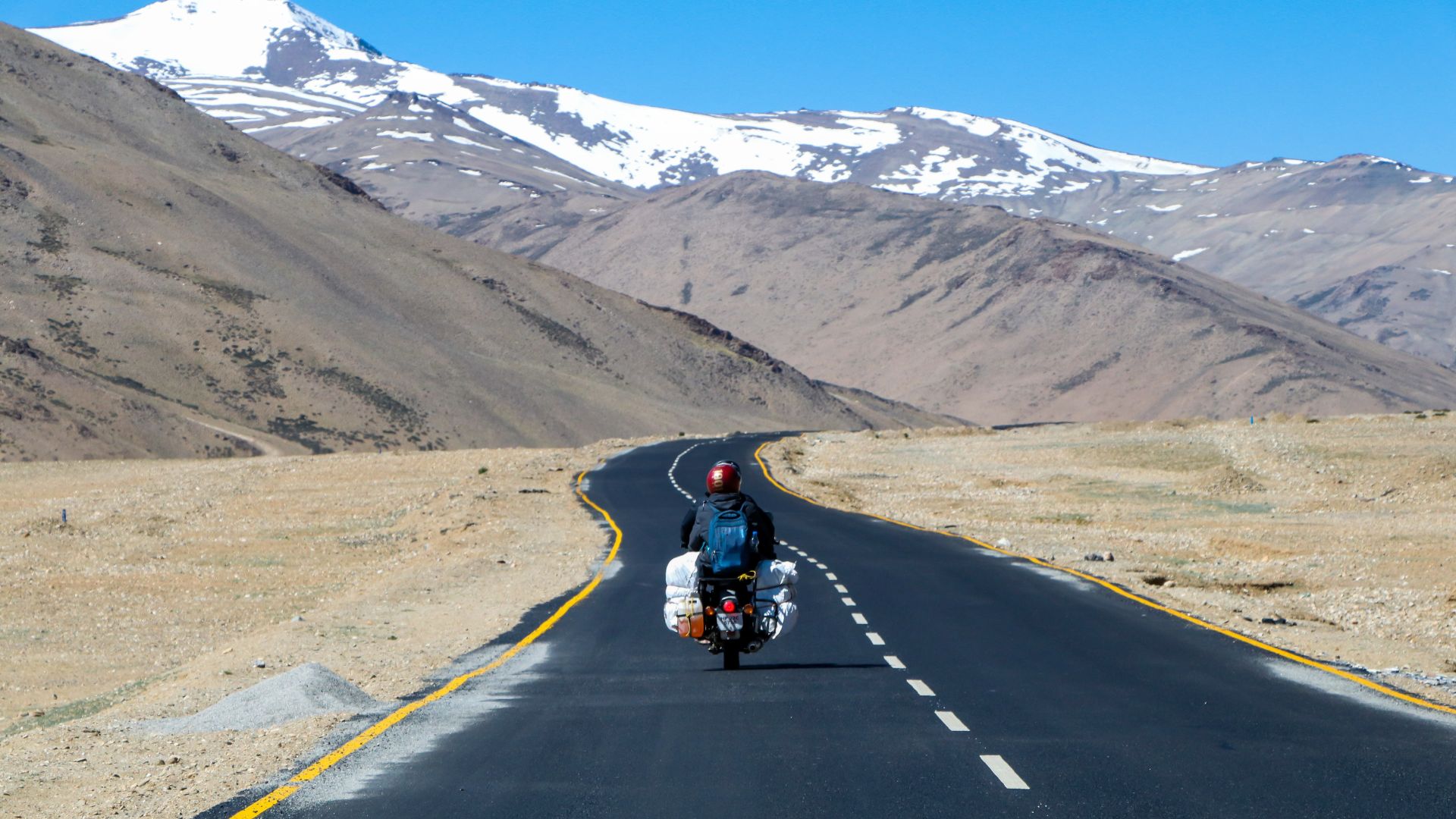
About Leh Ladakh
Leh Ladakh, often called the "Land of High Passes," is a mesmerizing region in the northernmost part of India. Nestled between the Karakoram and Himalayan mountain ranges, this high-altitude desert offers stunning landscapes, ancient Buddhist monasteries, and thrilling adventure opportunities. From the turquoise waters of Pangong Lake to the world's highest motorable passes, Ladakh is a dream destination for travelers seeking both natural beauty and cultural richness.
High Altitude Adventure
Explore the world's highest motorable passes
Pangong Lake
The stunning blue lake that changes colors
Ancient Monasteries
Centuries-old Buddhist monasteries
Photographer's Paradise
Stunning landscapes at every turn
Tour Highlights
- Visit the breathtaking Pangong Tso Lake
- Cross Khardung La - world's highest motorable road
- Explore Nubra Valley and ride double-humped camels
- Visit ancient monasteries like Thiksey and Hemis
- Experience the magnetic hill phenomenon
- Explore Leh Palace and Shanti Stupa
Detailed Itinerary
- Morning: Arrival at Leh Airport (11,500 ft), transfer to hotel
- Afternoon: Complete rest for acclimatization (very important)
- Evening: Short walk around Leh market (if feeling well)
- Night: Overnight at hotel in Leh
Note: Drink plenty of water and avoid strenuous activity on first day.
- Morning: Visit Shanti Stupa for panoramic views of Leh
- Late Morning: Explore Leh Palace (mini version of Potala Palace)
- Afternoon: Visit Hall of Fame museum and Magnetic Hill
- Evening: Explore Leh market and try local cuisine
- Morning: Drive to Nubra Valley via Khardung La (18,380 ft)
- Afternoon: Arrive in Hunder, visit sand dunes
- Evening: Double-humped camel ride in Hunder
- Night: Overnight stay at camp/resort in Nubra
- Morning: Visit Diskit Monastery with giant Maitreya Buddha
- Afternoon: Drive to Pangong Lake via Shyok River route
- Evening: Arrive at Pangong Lake (14,270 ft), sunset views
- Night: Overnight stay at lakeside camp
- Morning: Sunrise at Pangong Lake, photography
- Afternoon: Return drive to Leh via Chang La pass
- Evening: Visit Thiksey Monastery en route
- Night: Overnight at hotel in Leh
- Morning: Visit Hemis Monastery (optional based on flight timing)
- Afternoon: Transfer to Leh Airport for departure
Extension Options: Tso Moriri Lake, Zanskar Valley, or Markha Valley Trek can be added.
Inclusions
- Accommodation in hotels/camps with breakfast
- All transfers and sightseeing by non-AC SUV (Innova/Xylo/Scorpio)
- Inner Line Permits for restricted areas
- Camel safari in Nubra Valley
- Oxygen cylinder in vehicle for emergencies
Exclusions
- Airfare to/from Leh
- Lunch and dinner (except where specified)
- Monument entrance fees and camera charges
- Personal expenses and tips
- Any cost arising due to flight delays/road blocks
Frequently Asked Questions
What is the best time to visit Leh Ladakh?
The best time to visit Leh Ladakh is from May to September when the weather is pleasant and all roads/passes are open. June-August offers the warmest temperatures (15-25°C during day). Winters (October-April) are extremely cold with temperatures dropping to -30°C and many areas inaccessible.
How to reach Leh Ladakh?
Leh is accessible by air (Kushok Bakula Rimpochee Airport) with flights from Delhi, Mumbai, and other major cities. Road options include the Manali-Leh Highway (open June-September) and Srinagar-Leh Highway (open May-October). We recommend flying into Leh for better acclimatization.
What about altitude sickness in Ladakh?
Altitude sickness is a real concern in Ladakh. Our itineraries include proper acclimatization days. We provide oxygen cylinders in vehicles and recommend drinking plenty of water, avoiding alcohol, and taking it easy for the first 48 hours. Those with heart/lung conditions should consult doctors before traveling.
What should I pack for Leh Ladakh?
Essential items include warm clothing (even in summer), sunglasses, sunscreen (SPF 50+), lip balm, comfortable walking shoes, medications, power bank (for limited electricity), and camera gear. Layered clothing is recommended as temperatures vary greatly between day and night.
Is the Ladakh tour suitable for families with children?
Yes, but we recommend it for children above 8 years due to the high altitude. We can customize itineraries with more rest days and lower altitude stays. Proper acclimatization is crucial for children. Consult with our travel experts for family-friendly options.
Package Options
Classic Ladakh Package
Extended Ladakh Package
Why Choose Us for Ladakh?
- Ladakh specialists with 10+ years experience
- Proper acclimatization schedules
- Oxygen cylinders in all vehicles
- Best hotels and camps with heating
- Expert local drivers familiar with terrain
- 24/7 support during your trip
Travel Tips for Ladakh
Altitude Sickness Prevention
Stay hydrated, avoid alcohol, and don't overexert yourself for first 2 days.
Sun Protection
High altitude means stronger UV rays - use SPF 50+ sunscreen and sunglasses.
Fuel Availability
Fuel stations are limited - fill up whenever possible and carry extra if going remote.